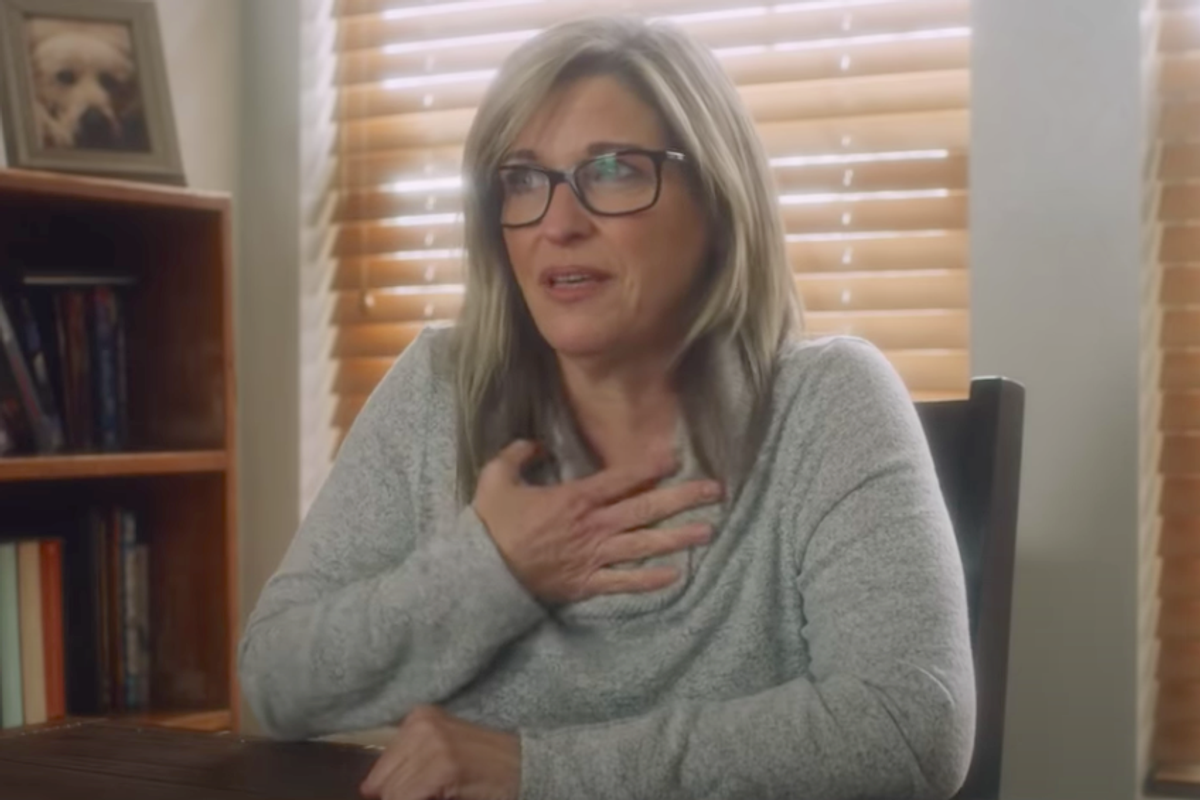How one nurse made sure her patients were never truly alone

Nicole Abate, a Registered Medical-Surgical Nurse living in New Mexico, starts her workday around 5:00 a.m. During her 20-minute drive to work, she gets to watch the sun rise over the Sandia Mountains as she sips her coffee.
"It's one of my favorite things to do," said Nurse Abate. "A lot of us need a little calm before the storm."
Nicole | Heroes Behind the Masks Presented by CeraVeyoutu.be
In March 2020, after a fairly quiet start to the year, Nurse Abate's unit became the official COVID unit for her hospital. "It went full force after that," she says. Abate was afraid, overwhelmed with uncertainty, never knowing what was next on the wild roller coaster in this new territory, "just when you think ...we know exactly what we're doing, boom, something else hits so you adapt… that's part of nursing too." Abate faced her responsibilities courageously and with grace, as she always does, making life a little better for patients and their families "Thank you for taking care of my father," reads one recent letter from a patient's family. "You were kind, attentive and strong and we are truly grateful."
Nurses are accustomed to losing patients—it's part of the job. The difference for Nurse Abate during the pandemic was watching her patients go through it alone. That's what hit her hardest and prompted her to bring an iPad into a patient's room so that the family could say their goodbyes via FaceTime before the patient passed away. "I don't think I have a greater honor than to be the person to hold someone's hand while they take their last breath," she says.
"Nursing can be a traumatic field to work in," says Wendy Mason, PhD, a faculty member in the School of Nursing at Purdue University Global. "Nurses are exposed to pain and suffering and trauma, and we are often traumatized and not even realize it. If we aren't caring for ourselves, we can't care for others."
Self-care is important for workers in every field, but especially for nurses, who spend their working hours serving the needs of others. A recent study found that self-care reduces stress, replenishes a nurse's capacity to provide compassion and empathy, and as a result, improves the overall quality of care. But nurses aren't always very good at making themselves a priority.
Nurse Abate says that because she wasn't taught the importance of self-care early on in life, learning how to put herself first has always been a struggle. "As I've grown older, I realized it's imperative," said Abate.
"I'm stressed until I finally walk in the door and my dogs come up and greet me … it's hard with COVID because you come home and it's all over the news and you just can't escape it," said Nurse Abate. "It's very hard work but it's the most rewarding work that I've ever done in my life."
Abate feels she's become more resilient over the past year and a half, finding other ways to ground herself like taking walks, reading, and visiting her parents from a safe distance. While she's managed to make the best of a terrible situation, she's looking forward to getting back to her normal self-care routines of monthly massages, going to the gym with friends, and antiquing. After all, even nurse heroes need a little downtime.
CeraVe® is a brand rooted in the medical community and committed to supporting healthcare professionals. As part of its commitment to nurses, CeraVe® is also a proud sponsor of the ANA Enterprise and their Healthy Nurse, Healthy Nation™ initiative, a movement designed to transform the health of the nation by improving the health of the nation's 4.2 million registered nurses. Through the initiative, ANA is connecting and engaging with nurses to inspire them to take action in five key areas: activity, sleep, nutrition, quality of life and safety.
Additionally, over the past year, CeraVe® has donated more than 500,000 products to hospitals to help provide therapeutic skincare relief to healthcare workers and is continuing the product donation efforts. Nurses looking to engage with the brand and learn more about these initiatives can join the Shift Change: Nurse Essentials Facebook group, an online community hosted by CeraVe® where nurses come together for personal and professional empowerment.
To see more stories about nurse heroes, visit https://www.heroesbehindthemasks.com/.
- Kids are making cards to thank doctors, nurses, and others on the ... ›
- We owe a huge thanks to the heroes on the front line of the ... ›
- Boy Scout 3-D prints over 1,200 'ear guards' to help healthcare ... ›
- Nurses on America's front line are begging for our help. We owe it to ... ›

